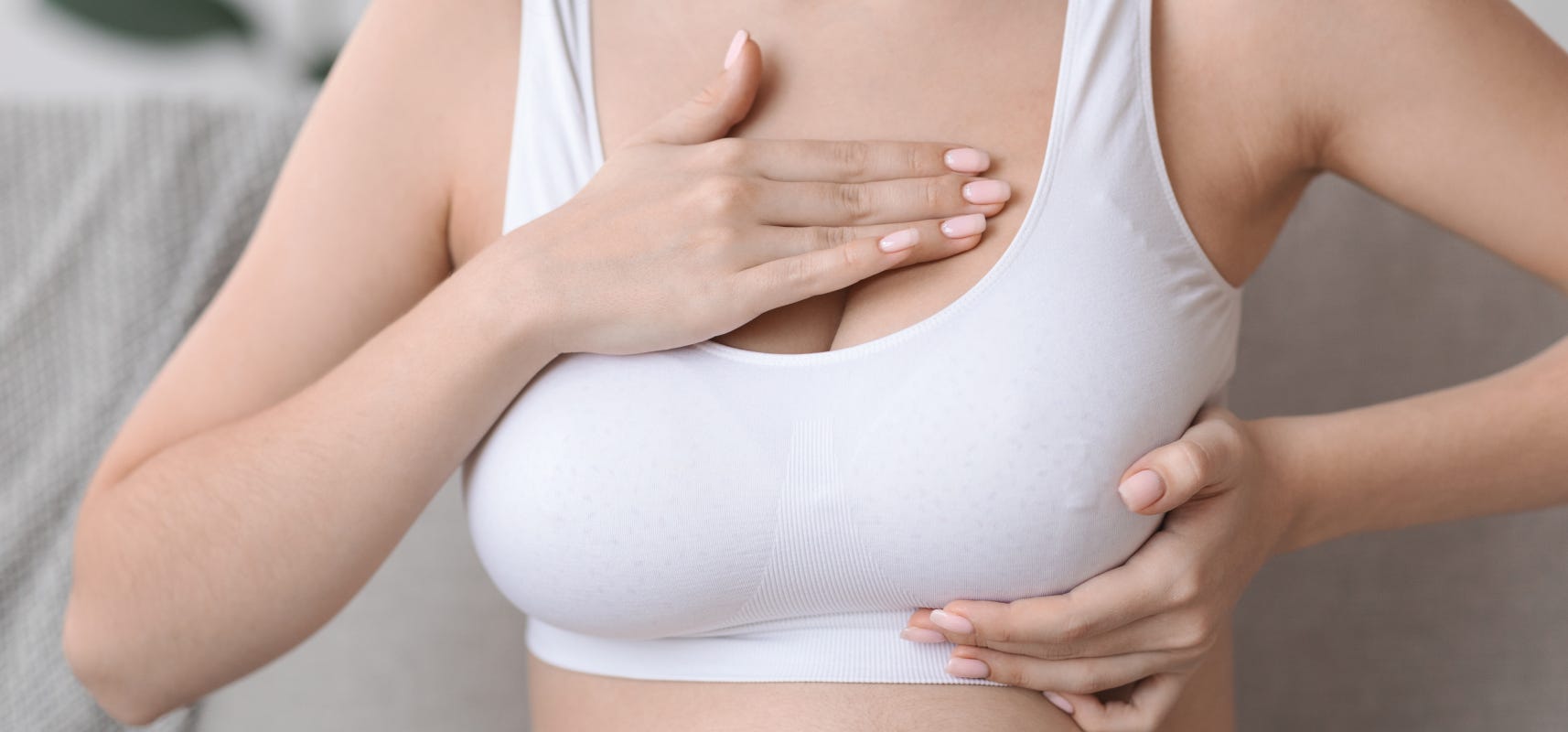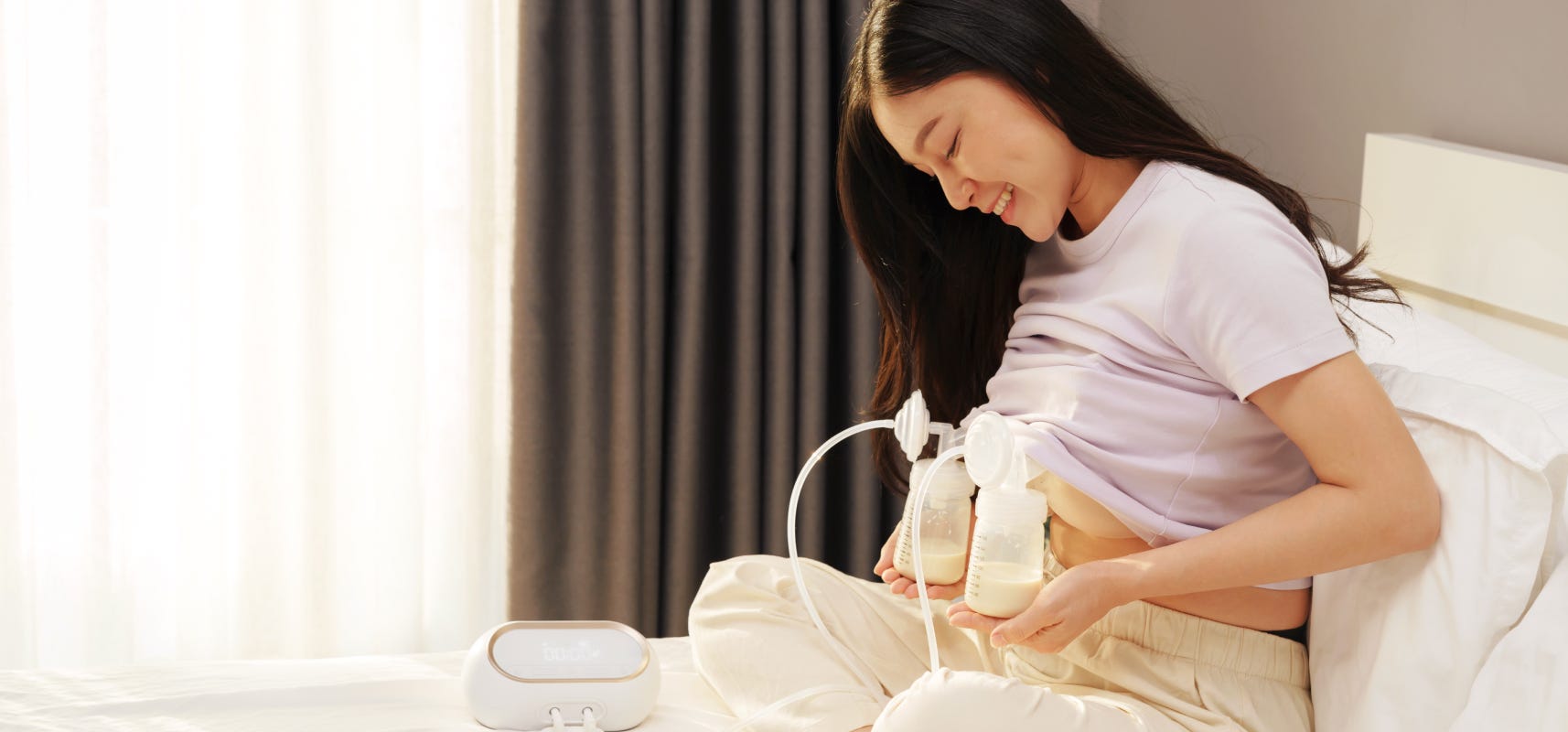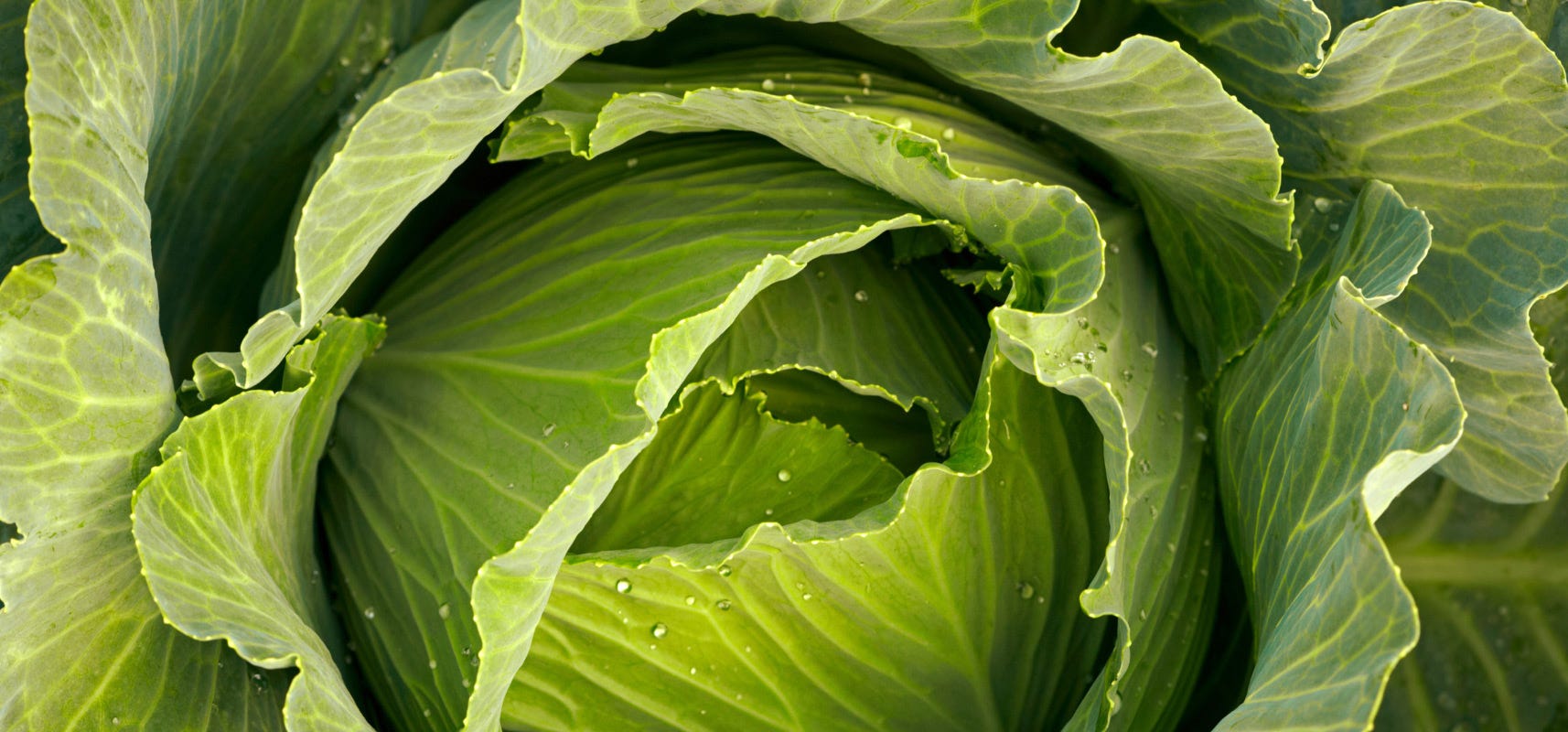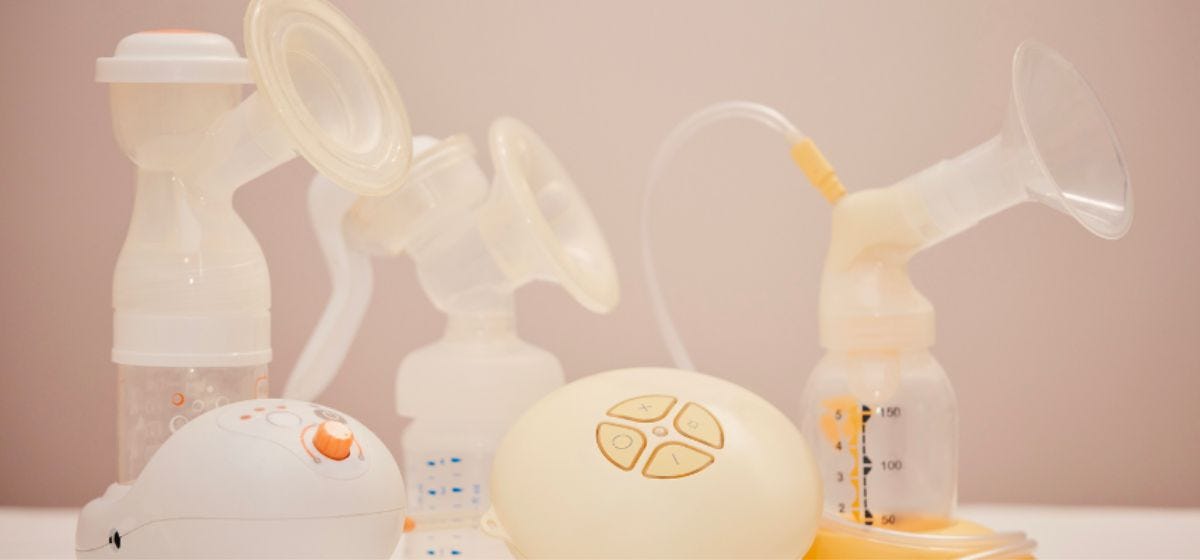Updated 11/2024
As a postpartum mama, you may experience breast engorgement. Learning how to manage breast engorgement, and how to prevent it from leading to Mastitis, is key to reducing discomfort, especially while breastfeeding.
When breast milk production begins, many women experience tender breasts that feel uncomfortably full or swollen. While this is a normal part of lactation, it's important to address discomfort caused by engorgement. If left untreated, the discomfort can make symptoms worse and potentially lead to more serious complications like mastitis. In this comprehensive guide, we'll explore everything you need to know about preventing and managing mastitis, so you can conquer this common yet challenging element of breastfeeding.
What Is Mastitis?
Mastitis occurs when a part of your breast becomes tender and swollen. Having milk left behind in the breasts after feeding (not fully emptying both breasts), clogged (plugged) milk ducts, and engorgement can contribute to mastitis. Cracked or damaged nipples can also cause mastitis by allowing bacteria to enter the breast tissue. In mastitis, the affected breast becomes red, warm, swollen, and painful. Initially, you may only feel a slight pain or tenderness in your breast; however, that pain can turn into full-blown flu symptoms that include fever, nausea, chills, and more.
Understanding Breast Engorgement
Breast engorgement is a common condition that occurs when your breasts become inflamed. This typically happens in the first few days after delivery as your milk supply comes in, or during times when feeding patterns change. While engorged breasts are normal to a degree, severe engorgement can lead to complications, including mastitis, if not properly managed.
How Long Does Breast Engorgement Last?
Typical engorgement peaks between 3-5 days postpartum and gradually subsides within a few days when properly treated. However, intermittent engorgement can occur throughout your breastfeeding journey, especially during schedule changes or when starting to wean.
Engorgement vs. Clogged Milk Ducts
While both conditions can be uncomfortable, there are key differences:
-
Engorgement affects the entire breast, making it feel firm, swollen, and tender.
-
Clogged ducts present as localized lumps or tender spots in specific areas of the breast.
-
Engorgement typically affects both breasts, while clogged ducts usually occur in one area.
Comprehensive Prevention and Treatment Strategies for Mastitis


There are several things you can do to help prevent mastitis from developing. Educating yourself prior to breastfeeding will dramatically decrease your chances of developing an infection. Once you begin nursing, you can follow these steps:
How to Prevent Mastitis
-
Nurse regularly: In those early postpartum days, breastfeed every 1 to 3 hours, or whenever your baby is hungry. It is important to feed or pump breast milk often enough to prevent engorgement.
-
Consult a certified lactation consultant to help with any latching problems: If your baby is not latching properly, your nipples may become sore and cracked. Cracks and abrasions on the nipples from a poor latch can allow bacteria to invade and infect the breast tissue. The best way to get a deep latch is to align your baby’s nose to your nipple at the beginning, so they can latch on with a nice, wide-open mouth. If you’re suffering from sore or cracked nipples, you might want to try a soothing nipple balm for some relief.
-
Alternate breasts: Feed with both breasts to ensure even emptying.
-
Try different breastfeeding positions: Experiment to find positions that help drain all areas of your breasts effectively.
-
Practice proper nipple care: Air-dry your nipples after each feeding. If you notice that your nipples are starting to become cracked or sore, try applying nipple cream or soothing nipple balm. Also, consider picking up some hydrogel breast pads as they can provide relief for sore nipples.
Best Remedies for Breast Engorgement During Breastfeeding


Immediate Strategies to Relieve Pain
-
Apply warm compresses before feeding to promote milk flow.
-
Use cold compresses after feeding to reduce swelling and discomfort.
-
Practice gentle breast massage during feeds.
-
Express a small amount of milk manually before feeding to soften the areola.
-
Take a warm shower, allowing water to flow over your breasts.
Can Pumping Help Engorgement?


A quality breast pump can be a very useful tool for managing engorgement and maintaining milk supply. Aeroflow Breastpumps can help you obtain a breast pump that suits your needs, often at little-to-no cost through insurance, mama! To find out if you qualify, complete our Qualify Through Insurance form.
Our breast pump specialists will work directly with your insurance company and your healthcare provider to determine your coverage—we can even request your breast pump prescription from your physician if your insurance indicates that you need a prescription! We'll contact you within 3-5 business days after your submission to discuss your pump options.
Pumping to Relieve Engorgement
Pumping can be beneficial for engorgement relief, but it should be done carefully:
-
Pump only enough to relieve discomfort.
-
Avoid over-pumping, which can stimulate increased milk production.
-
Use your pump regularly if your baby is having difficulty latching or needs more milk.
Safe Ways to Treat Breast Engorgement
In addition to pumping, here are a few safe methods to help you treat breast engorgement.


-
Cabbage Leaf Compression: Green cabbage leaves have been shown to decrease breast engorgement and pain. To manage mastitis, put a cold cabbage leaf on the affected breast for 20 minutes, three times a day. Be sure not to overdo it though, as more frequent use of cabbage leaves may decrease breast milk supply. As soon as you feel relief, remove the leaves, and be sure you’re not applying the cabbage to broken skin.
-
Weaning: When the time comes, make sure you gradually wean your baby from nursing by dropping one nursing or pumping session at a time. This can help to prevent too much breast fullness and allow enough time for your baby to adjust to new eating habits.
-
Pump your milk: If you know you’ll be unable to nurse for four or more hours, set aside a time and place where you can express your milk. If you develop severe mastitis, you may need to rent a hospital-grade breast pump.
How to Relieve Engorged Breasts Without Breastfeeding
For mothers who aren't breastfeeding or are weaning:
-
Apply cold compresses to reduce swelling and pain
-
Wear a firm, supportive bra
-
Avoid heat applications, which can increase milk production
-
Express minimal amounts of milk, only for comfort
Preventing Breast Engorgement While Weaning
-
Gradual Approach: Drop one feeding session at a time, and wait several days between dropping feeds. Start with daytime feeds first, and use cold compresses to manage discomfort.
-
Monitor for Signs of Complications: Check for red, hot spots and watch for fever. Note any unusual pain or lumps, and do not hesitate to contact your doctor with any questions or concerns.
When to Seek Professional Help
While we encourage you to contact your doctor with any questions or concerns at any time, immediately contact your healthcare provider if you experience:
-
Fever over 101.3°F (38.5°C)
-
Severe pain that doesn't improve with treatment
-
Red streaking on breast tissue
-
Symptoms that don't improve within 24-48 hours of self-care
Remember, every mother's breastfeeding journey is unique, and having the right support and tools can make all the difference in managing challenges like engorgement and mastitis. With proper care, education, and the right breast pump, you can work through this common yet painful breastfeeding challenge. If you have questions about mastitis or getting a breast pump through insurance, give Aeroflow Breastpumps a call today at 844-867-9890. We're here to help!











